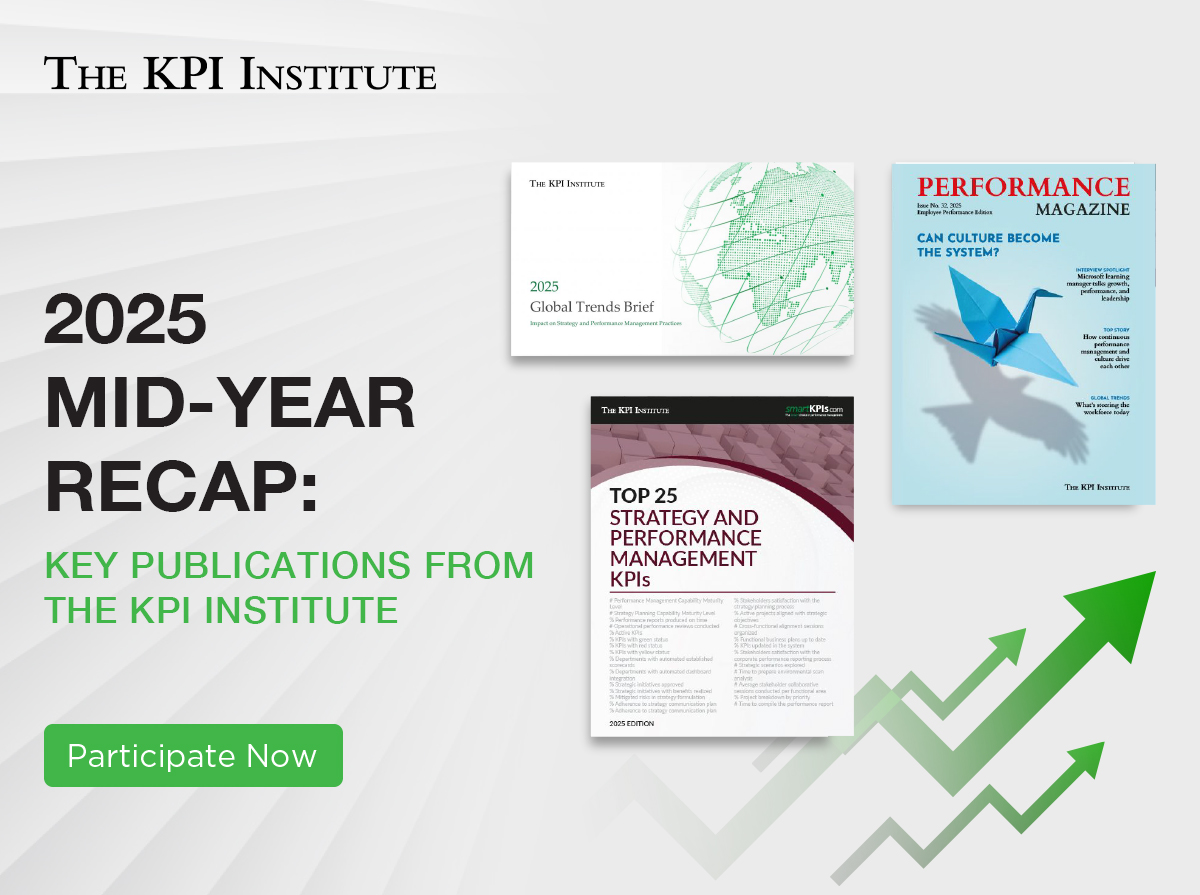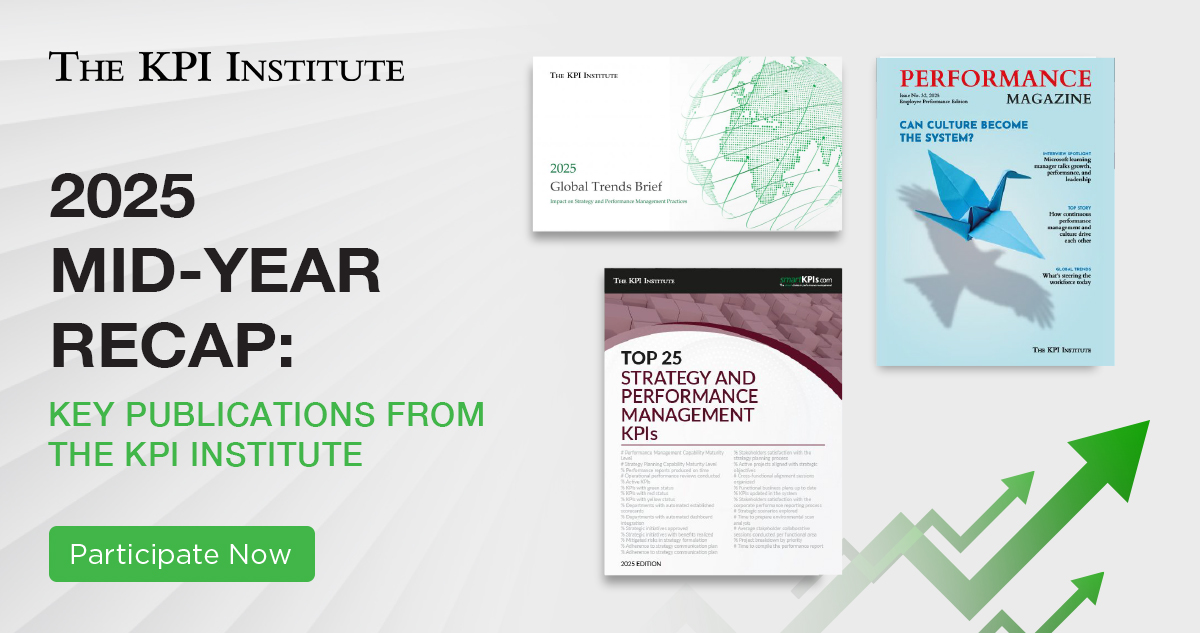
2025 mid-year recap: key publications from The KPI Institute
June 4th, 2025 Posted by Kimberly Tilar Publications 0 thoughts on “2025 mid-year recap: key publications from The KPI Institute”
The first half of 2025 has been marked by a series of strategic publications from The KPI Institute, underscoring its continued commitment to advancing the field of strategy and performance management. These publications address emerging challenges and opportunities across industries, providing in-depth analysis, practical frameworks, and actionable insights for professionals and organizations worldwide. This mid-year recap highlights the most impactful releases to date, each reflecting the Institute’s mission to support sustainable performance and informed decision-making.
One of the key highlights is the 2025 Global Trends Brief. It is a secondary research report that analyzes the critical forces reshaping the global business environment. Drawing on insights from over 100 leading research and consultancy sources, the Brief presents a clear, data-driven overview of the trends influencing strategy and performance today. Covering themes such as geopolitical developments, artificial intelligence, and evolving regulatory landscapes, the report provides valuable guidance on how these shifts impact decision-making, operational resilience, and long-term strategic planning.
Another significant contribution is the Top 25 KPIs Series, which showcases key performance indicators (KPIs) across various industries and functional areas. Released in the first half of the year are the Top 25 Oil and Gas KPIs – 2025 Edition, Top 25 Strategy and Performance Management KPIs – 2025 Edition, and Top 25 Local Government KPIs – 2025 Edition. Each report includes not only curated KPI lists but also practical guidance on implementation, along with the latest developments in performance measurement.
For professionals seeking a focused exploration of individual KPIs, the KPI of the Month (KPIoM) series provides in-depth profiles of key metrics. Each feature includes definitions, calculation formulas, and real-world applications. Recent editions have highlighted indicators such as % Return on Assets, % Employee Burnout Rate, $ Internal Carbon Fee, % Production Schedule Attainment, and % First Call Resolution Rate.
Further expanding its KPI-related resources, The KPI Institute released new entries in the KPIs for Industries infographic series during the first half of 2025. These include KPI sets for health and healthcare providers, medical laboratories, and pharmacies. Each infographic leverages Value Flow Analysis—a methodology that maps how value is generated across industry-specific processes—and offers detailed definitions, component metrics, and calculation methods. These resources are designed to support targeted performance improvement initiatives at both strategic and operational levels.
In addition, The KPI Institute launched the first quarterly edition of its flagship publication for the year: Performance Magazine Issue No. 32 – Employee Performance Edition. This edition explores how organizational culture functions not merely as a background element but as a fundamental enabler of performance. Featuring expert commentary, models, and practical tools, the issue encourages professionals to treat culture as a strategic resource—something to be intentionally shaped and applied to reinforce engagement, alignment, and long-term success.
To explore these publications and more, visit the TKI Marketplace and gain access to the latest resources in strategy and performance management.














